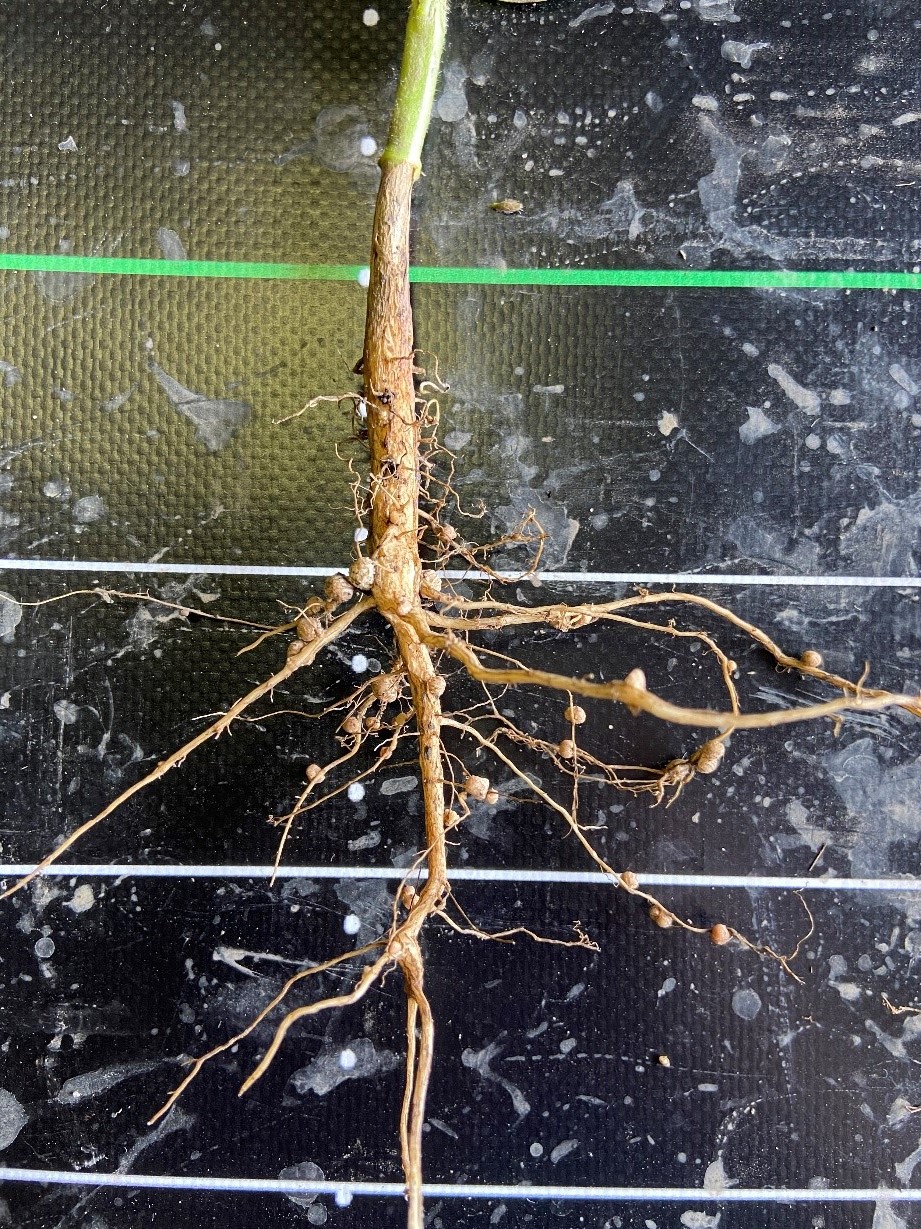ILSOYADVISOR POST
Biological Products, What Are They and Where Do They Work?
What are biologicals?
There has been an explosion of biological product offerings on the agriculture market purported to increase plant health, crop quality and yield. These “biologicals” are typically living microbial organisms of bacteria or fungi.
How do they work?
Microbes in our agriculture fields exist as a complex community. A single gram of soil can contain between 108-1011 individual microbes from 6,000 to 50,000 unique species. As such, microbe species fill certain niches and perform unique functions. You may have heard of ones that fix nitrogen (Bradyrhizobium in soybean for example) or solubilize phosphorus, in turn increasing soil nutrient availability for the crop. Another common biological are mycorrhizal fungi, which colonize along root systems to increase their surface area, thereby extending the root coverage for greater uptake of water and immobile nutrients like phosphorus.
How should they be stored and applied?
While they differ in manufacturing and packaging microbial biologicals are living organisms, and as such need to be kept out of the sunlight and at or slightly below room temperature, as UV exposure or extreme heat can inhibit their efficacy. Seed treatments are the most cost effective and the simplest way to apply. Others are applied in-furrow with a starter system during planting. The key to optimizing their value is placing the product near the seed where the roots will be actively growing. With so many native microbial species in the soil, there can be an uphill battle for the applied biological product, so pairing the product with or near the seed at planting can lead to the best chance of success.

inside the nodule and in return for sugars from the plant
they turn atmospheric nitrogen gas into a useable form
for the plant. Photo Credit: Stephen Schwartz,
University of Illinois
How to know which products work, and which are “snake oils?”
The term snake oil comes from products that make many claims to benefit plant growth and yield but for which there is limited scientific validation. A biological product that has multiple claims from a single species may be overstated. For example, if working with a nitrogen-fixer that is what the product should do and any additional claims start to stretch beyond likely impacts.
How to try a new biological on the farm?
To prevent a chosen biological from becoming a snake oil, understand the primary function of the product, optimal storage, application method and rates, and then work with your retailer to place that product into your specific management practice. Start with a small area of the farm and build from there. These are living organisms, so do not give up after a single year. Follow the applied area through the season, learn what may or may not have helped, and then adjust for the following year.
For more information the Biological Products Industry Alliance or Biostimulant Coalition both offer multiple resources:
https://www.bpia.org/
http://www.biostimulantcoalition.org/





Comments
Add new comment